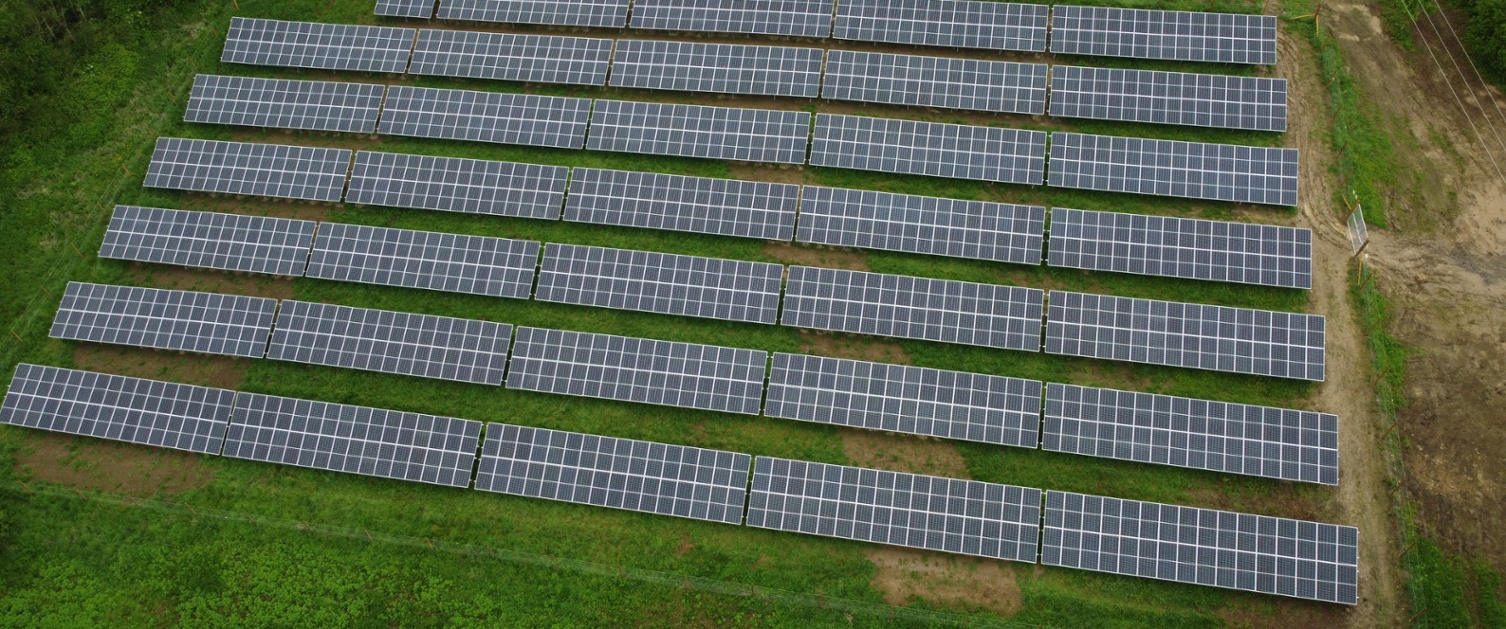Solar farm installation at St David's Park site

19 July 2022
Hywel Dda University Health Board’s (UHB) first solar farm has been installed at Hafan Derwen, located on the Parc Dewi Sant site.
The 1,098 panels have been installed on an area covering just over one acre. The 450 KW solar farm scheme aims to deliver on-site generated electricity directly to the Hafan Derwen site, which is estimated to lead to an annual carbon savings of 120.43tCo2e, along with financial savings.
The surrounding land is being developed to enhance biodiversity providing an area for staff to rest and relax while surrounded by wildlife which will have a positive impact on how staff perceive their workplace and offer a respite from a busy working environment.
Paul Williams, head of property performance at Hywel Dda UHB, said: “We are pleased to announce that the solar farm installation work is nearing completion at Hafan Derwen site and it is set to be operational later this summer. The solar project is one of the initiatives aimed at reducing our carbon footprint. The project will generate an on-site renewable energy and also create a greener, environment friendly space for staff with the planned bio-diversity park.
“This is yet another positive step in the direction of tapping on and exploring environment friendly, energy efficient solutions across health board sites.”
The solar farm project (opens in new tab) is part of the health board’s decarbonisation initiative. This is one of the many steps the health board is taking towards addressing the Climate Emergency (opens in new tab).
In the last few years, roof mounted photovoltaic panels have been installed at nine sites across Hywel Dda, including at Amman Valley Hospital, Bro Cerwyn, Bronglais Hospital, Withybush Hospital, Milford Haven Health Centre, Pembroke Dock Health Centre, South Pembrokeshire Hospital, Llandovery and Cardigan Integrated Care Centres. In total, these schemes are estimated to save approximately 622,763 Kwh of electricity. Annual carbon savings from these projects are expected to be approximately 153 tCO2e.